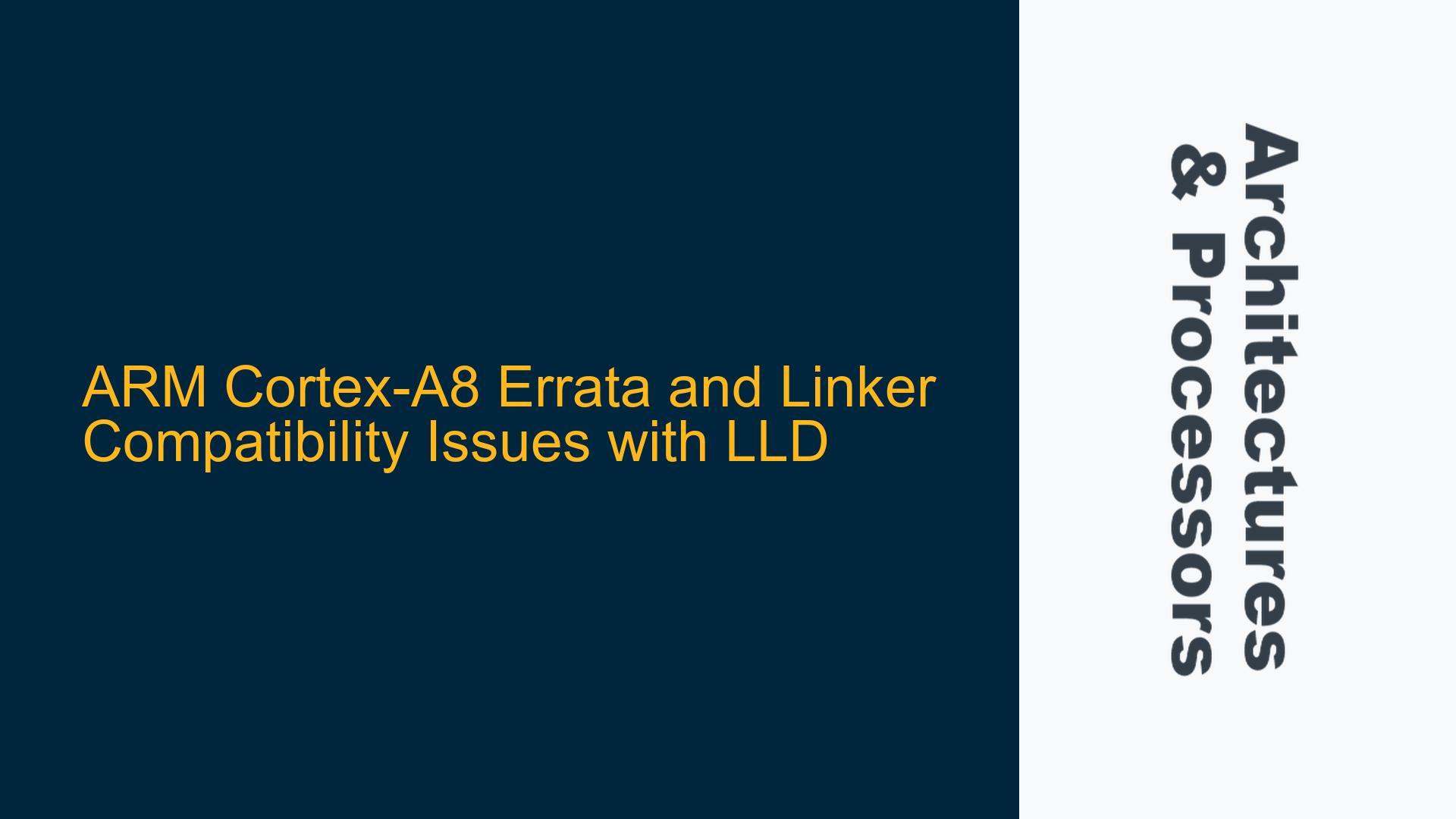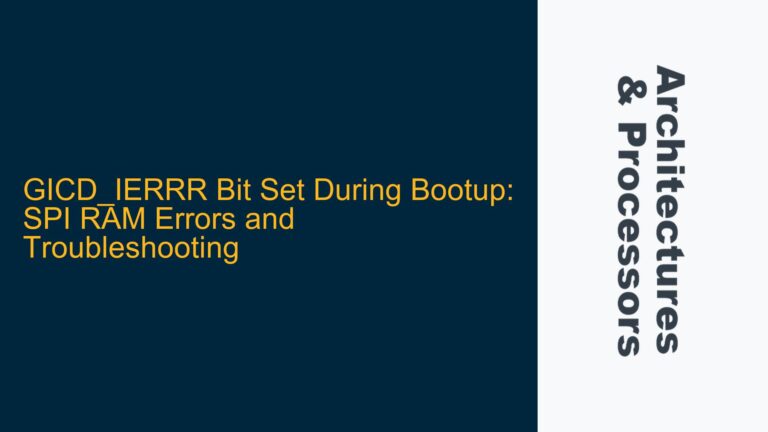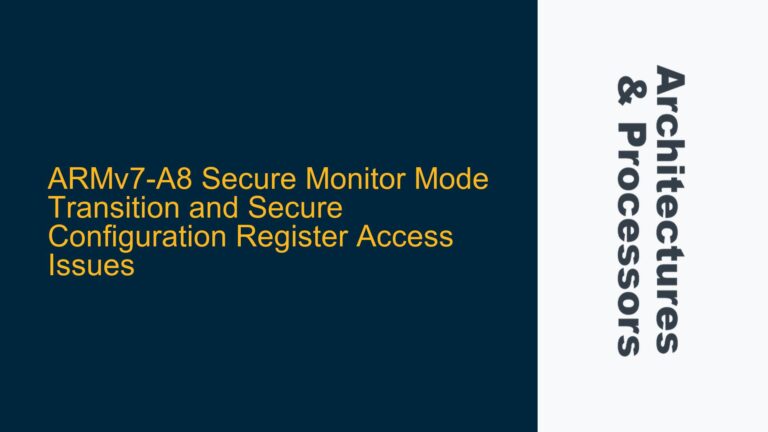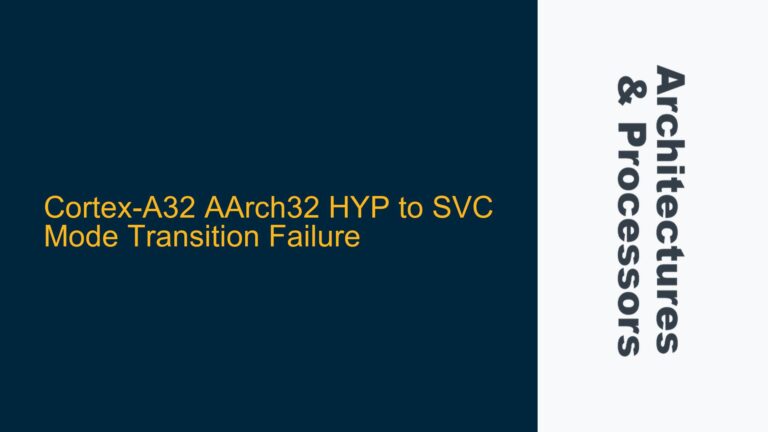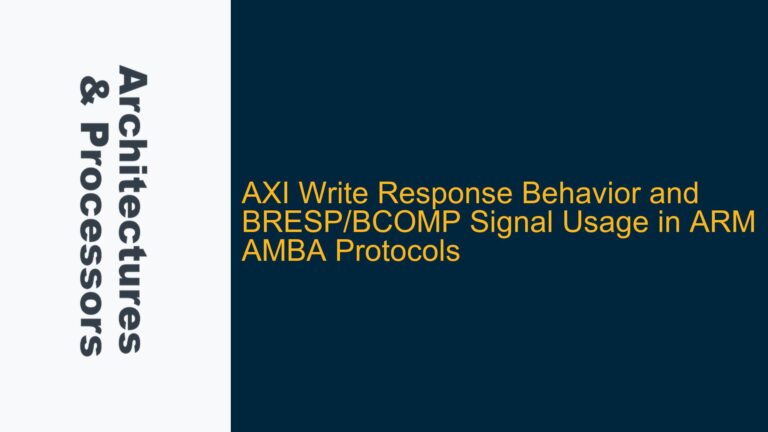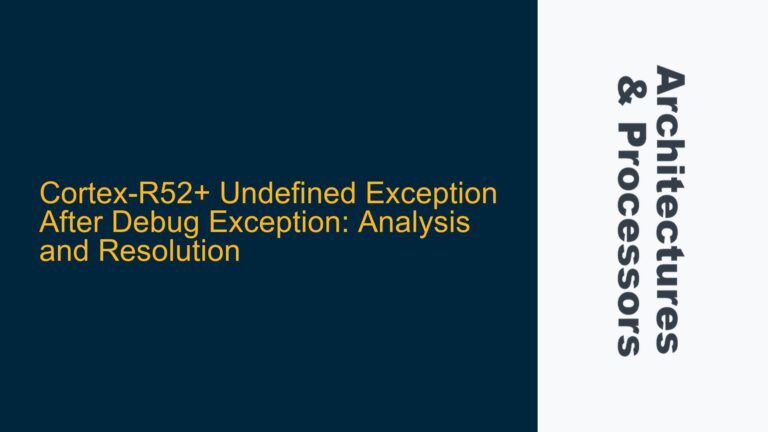ARM Cortex-A8 Errata and Debug Interface Implications
The ARM Cortex-A8 processor, while a powerful and widely used core, is known to have a specific errata related to the interaction between the CPU and the CoreSight debugger. This errata, often referred to as the "Cortex-A8 Errata #657417," involves a scenario where a specific sequence of instructions can cause the processor to hang when the CoreSight debugger is actively monitoring the system. The --fix-cortex-a8 flag in the linker is designed to mitigate this issue by inserting a specific sequence of instructions that prevent the problematic scenario from occurring.
The CoreSight debugger is a sophisticated tool used for real-time debugging and trace capture in ARM-based systems. It allows developers to monitor the execution of code, set breakpoints, and capture detailed trace information. However, the Cortex-A8 errata specifically affects the interface between the CPU and the CoreSight debugger, leading to potential system hangs when certain conditions are met. This is particularly relevant in systems where real-time debugging is required, such as during the development and testing phases of embedded systems.
The errata is not typically a concern in production systems where the CoreSight debugger is not actively used. However, the presence of the errata means that any system using the Cortex-A8 processor must be carefully designed to avoid the conditions that trigger the issue. This is where the --fix-cortex-a8 linker flag comes into play. By inserting specific instructions at strategic points in the code, the linker can prevent the problematic sequence from occurring, thereby avoiding the potential for system hangs.
The concern raised in the discussion is whether the absence of the --fix-cortex-a8 flag in the LLD (LLVM Linker) could lead to runtime errors in systems using the Cortex-A8 processor, particularly in the context of Android and WatchOS development. The Android NDK GitHub issue suggests that the errata is not a significant concern, but this may not hold true for all use cases, especially in systems where real-time debugging is required.
Memory Barrier Omission and Cache Invalidation Timing
One of the key aspects of the Cortex-A8 errata is the timing of memory barriers and cache invalidation. The errata specifically involves a sequence of instructions that can cause the processor to hang when the CoreSight debugger is active. This sequence typically involves a mix of memory access operations and cache maintenance operations, which can lead to a situation where the processor’s pipeline becomes stalled.
Memory barriers are used to ensure that memory operations are completed in a specific order, which is crucial for maintaining the consistency of the system’s memory state. In the context of the Cortex-A8 errata, the absence of appropriate memory barriers can lead to a situation where the processor’s pipeline becomes stalled, particularly when the CoreSight debugger is actively monitoring the system.
Cache invalidation is another critical aspect of the errata. The Cortex-A8 processor uses a cache to improve the performance of memory access operations. However, the cache must be properly managed to ensure that the system’s memory state remains consistent. In the context of the errata, improper cache invalidation can lead to a situation where the processor’s pipeline becomes stalled, particularly when the CoreSight debugger is actively monitoring the system.
The --fix-cortex-a8 linker flag is designed to address these issues by inserting specific instructions that ensure proper memory barrier and cache invalidation timing. These instructions are inserted at strategic points in the code to prevent the problematic sequence from occurring. However, the absence of this flag in the LLD linker means that these instructions are not automatically inserted, which could lead to potential issues in systems using the Cortex-A8 processor.
The Android NDK GitHub issue suggests that the errata is not a significant concern, but this may not hold true for all use cases. In particular, systems that rely heavily on real-time debugging and trace capture may be more susceptible to the issues caused by the errata. Additionally, the timing of memory barriers and cache invalidation can vary depending on the specific implementation of the system, which means that the absence of the --fix-cortex-a8 flag could lead to unpredictable behavior in some cases.
Implementing Data Synchronization Barriers and Cache Management
To address the issues related to the Cortex-A8 errata in the absence of the --fix-cortex-a8 flag in the LLD linker, developers must take a proactive approach to implementing data synchronization barriers and cache management. This involves manually inserting the necessary instructions to ensure proper memory barrier and cache invalidation timing, thereby preventing the problematic sequence from occurring.
Data synchronization barriers (DSBs) are used to ensure that all memory access operations are completed before proceeding to the next instruction. In the context of the Cortex-A8 errata, DSBs can be used to prevent the processor’s pipeline from becoming stalled due to improper memory barrier timing. By inserting DSBs at strategic points in the code, developers can ensure that memory access operations are completed in the correct order, thereby avoiding the potential for system hangs.
Cache management is another critical aspect of addressing the Cortex-A8 errata. The Cortex-A8 processor uses a cache to improve the performance of memory access operations, but the cache must be properly managed to ensure that the system’s memory state remains consistent. This involves invalidating the cache at appropriate points in the code to ensure that the processor’s pipeline does not become stalled due to improper cache invalidation timing.
In the absence of the --fix-cortex-a8 flag in the LLD linker, developers must manually insert the necessary instructions to ensure proper cache management. This may involve using cache maintenance operations such as cache invalidate, cache clean, and cache clean and invalidate operations. These operations must be inserted at strategic points in the code to ensure that the cache is properly managed, thereby preventing the problematic sequence from occurring.
In addition to implementing data synchronization barriers and cache management, developers should also consider the use of other techniques to mitigate the issues related to the Cortex-A8 errata. This may include the use of software workarounds, such as inserting NOP (no operation) instructions at strategic points in the code to prevent the processor’s pipeline from becoming stalled. Additionally, developers should carefully review the system’s memory map and ensure that memory access operations are properly aligned to avoid potential issues related to the errata.
In conclusion, while the Android NDK GitHub issue suggests that the Cortex-A8 errata is not a significant concern, developers must take a proactive approach to addressing the issues related to the errata in the absence of the --fix-cortex-a8 flag in the LLD linker. This involves implementing data synchronization barriers, proper cache management, and other techniques to ensure that the system’s memory state remains consistent and that the processor’s pipeline does not become stalled. By taking these steps, developers can mitigate the potential for runtime errors in systems using the Cortex-A8 processor, particularly in the context of Android and WatchOS development.
